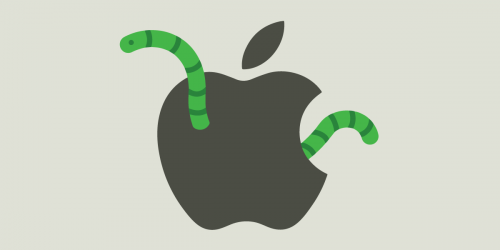U.S. antitrust enforcers are reported to be crafting a lawsuit against Google (and its parent company, Alphabet). The Department of Justice and a large coalition of state attorneys general are meeting this week and could file suit very soon. While it will reportedly focus on Google’s dominance in online advertising and search, the suit could encompass many more facets of Google’s conduct, including its dominance in mobile operating systems and Web browsers. This suit has the potential to be the most significant antitrust case against a technology company in over 20 years, since the DOJ’s 1998 suit against Microsoft.
All users of Google products, and everyone who views Google-brokered ads—in other words, nearly all Internet users—have a stake in the outcome of this lawsuit. That’s why it needs to be done right. It should cover more than just advertising markets, and focus on Google’s search, browser, and mobile OS market power as well. And the antitrust authorities should pursue smart remedies that look beyond money damages, including breakups and requiring interoperability with competitive products, all while being careful to protect users’ free speech and privacy interests that will inevitably be caught up in the mix. Like many, we worry that if this is rushed, it might not go well, so we urge the enforcers to take the time they need to do it right, while recognizing that there is ongoing harm.
The Importance of “Big Case” Antitrust
U.S. government antitrust suits have a have an important place in the history of innovation, because even when they didn’t end with a court order to break up a company, there is a reasonable case to be made that they created breathing room for innovation. The DOJ’s suit against IBM, for “monopolizing or attempting to monopolize the general purpose electronic digital computer system market” began in 1969, went to trial in 1975, and was withdrawn in 1982. Even though the case didn’t end with a court-ordered remedy, a decade-plus of public scrutiny into IBM’s business practices arguably kept the company from squashing nascent competitors like Microsoft as it had squashed other rivals for decades. That result likely helped launch the personal computer revolution of the 1980s, fueled by the ideas of numerous companies beyond “Big Blue.”
The government’s suit against AT&T, which had held a legally recognized monopoly over telephone service in the U.S. for most of the twentieth century, almost ended the same way as the IBM suit. Filed in 1974, US v. AT&T had not reached a judgment by 1982. But years of scrutiny, combined with the rise of potential competitors who were itching to enter telephone service and related markets, led AT&T’s leadership to agree to a breakup, allowing the “Baby Bells” and technology-focused spinoffs to innovate in data communications and the development of the Internet in ways that “Ma Bell” could not. It’s hard to imagine the Internet entering widespread use in the 1990s with a monolithic AT&T still deciding who could connect to telephone networks and what devices they could use. Even though the successors to AT&T eventually re-assembled themselves, the innovation unleashed by the breakup is still with us.
The 1998 case against Microsoft over its exclusion of rival Web browser software from PCs was also a boon to innovation. At the time, an AT&T-style breakup of Microsoft, perhaps splitting its operating system and application software divisions into separate companies, was a distinct possibility. In fact, the trial court ordered just that. On appeal, the D.C. Circuit rejected a breakup and instead ordered Microsoft to adhere to ongoing restrictions on its behavior towards competing software vendors and PC manufacturers. Once again, this seemed like something less than shining success. But facing ongoing monitoring of its behavior towards competitors, Microsoft shelved plans to crush a little-known search company called Google.
Two decades later, Google has expanded into so many Internet-related markets that its position in many of them appears unassailable. Google has been able to buy out or drive out of business nearly every company that dares compete with it in a variety of markets. The engine of disruptive innovation has broken down again, and a bold, thoughtful antitrust challenge by federal and state enforcers may be just the thing to help revive it.
Look at All of Alphabet, Not Just Advertising
News reports suggest that the suit against Google may focus on the company’s dominance of Web advertising, which is alleged to depress the ad revenues available to publishers. The suit may also address Google’s conduct towards competitors in search markets, such as travel and product searches. It could also look at Google’s history of mergers and acquisitions, such as its 2007 purchase of the advertising company DoubleClick, to see if it led to it acquiring monopoly power in various markets.
On the scope of the lawsuit, antitrust enforcers should go big. A suit that challenges Google’s conduct in advertising markets alone would not benefit consumers very much. While Google’s vast collection of data about users’ browsing habits and preferences, derived from its ad networks, causes great harm to consumers, it’s not yet clear whether dozens of smaller competitors in the ad-tech space, some of which are extremely shady, will be better stewards of user privacy. The answer here involves both antitrust and much-needed new privacy law. That will help consumers across the board.
The DOJ and states should also challenge Google’s leveraging of its existing market power in search, Web browsing (Chrome), and mobile operating systems (Android) to shut out competition. The suit should also address whether Google’s collection and control of user data across so many apps and devices—plus data from the millions of websites connected to Google’s advertising networks—gives it an advantage in other markets that triggers antitrust scrutiny. These are, in part, novel and difficult claims under antitrust law. But enforcers should aim high. Success in holding Google to account for its wielding of monopoly power, even if it does not succeed entirely, can help the courts and possibly Congress adapt antitrust law for the digital age. It can also help create a bulwark against further centralization of the Internet. And as history shows, even a suit that doesn’t ultimately lead to a breakup can help make room for innovation from diverse sources beyond the walls of today’s tech giants.
Have A Big Toolbox of Remedies: Interoperability, Follow-On Innovation, Conduct Rules, and Breakups
It’s obvious by now that antitrust enforcers need to pursue remedies beyond money damages. Google and Alphabet are large enough to treat almost any fine as a cost of doing business without significantly changing their behavior. A court-ordered breakup of Alphabet should be seriously considered as part of the case, as well—perhaps an order to separate aspects of Google’s advertising business or to unwind Google’s most problematic acquisitions.
Breakups shouldn’t be the only arrow in the government’s quiver of remedies, though. Ordering Google to allow its competitors to build products that interoperate would strike at the heart of Google’s monopoly problem and might be an easier lift. As we’ve shown through many examples, building products that can connect to existing, dominant products, without permission from the incumbent vendor, can be a potent antimonopoly weapon. It can help put users back into control.
In Google’s case, that could mean ordering Google not to interfere with products that block Google-distributed ads and tracking. Allowing ad- and tracker-blocking technologies to flourish would allow users to shape the ad-tech market by favoring companies that collect less user data, and who are more responsible with the data they have. It could also spur innovation in that market (note: EFF’s Privacy Badger is one of those technologies, but this could help many services). In that scenario, Google would have to compete for users’ views and clicks by protecting their privacy.
Interoperability requirements imposed as an antitrust remedy, or as part of a settlement, avoid many of the problems that come with more generalized technology mandates because orders can be crafted to suit a particular company’s technologies and practices. It can involve ongoing monitoring to ensure compliance and help avoid problems with security or other issues that could arise with a one-size-fits-all approach.
The upcoming lawsuit against Google is a great opportunity to begin addressing the problems of Big Tech’s monopoly power. If enforcers act boldly, they can set new antitrust precedents that will promote competition throughout high-tech markets. They can also use this opportunity to advance interoperability as a spur to innovation and a monopoly remedy.













